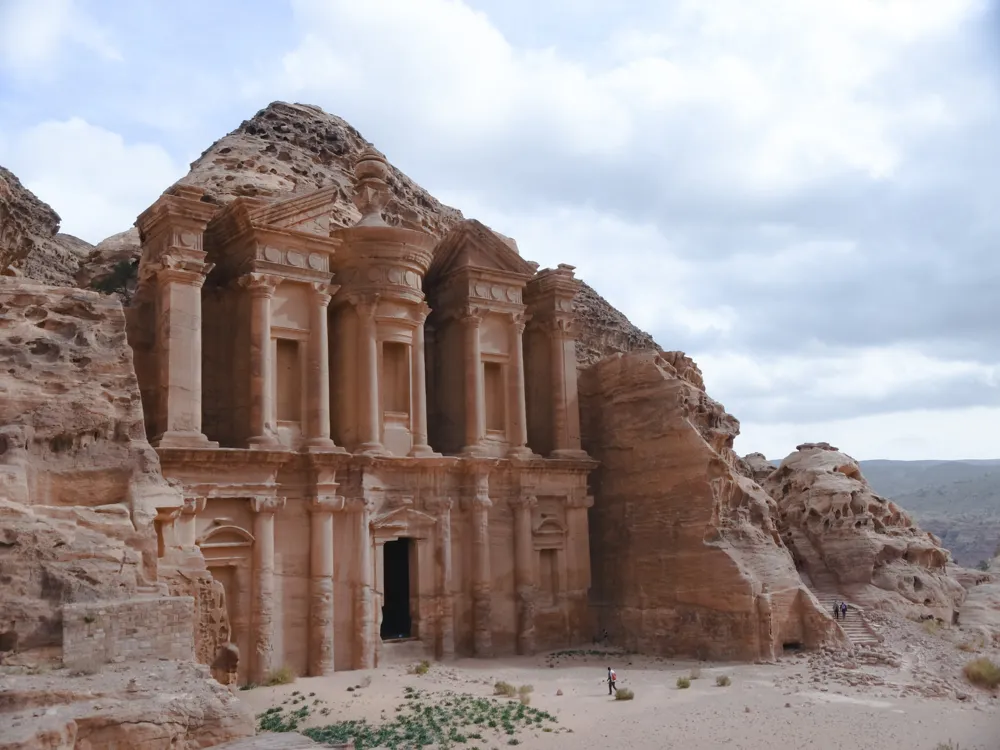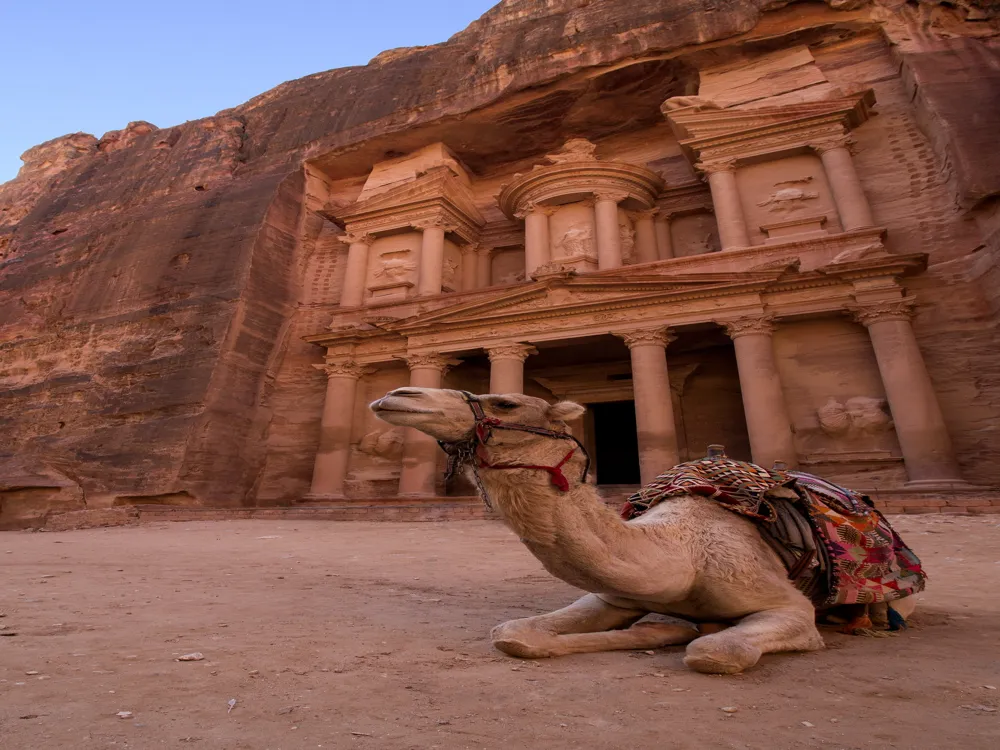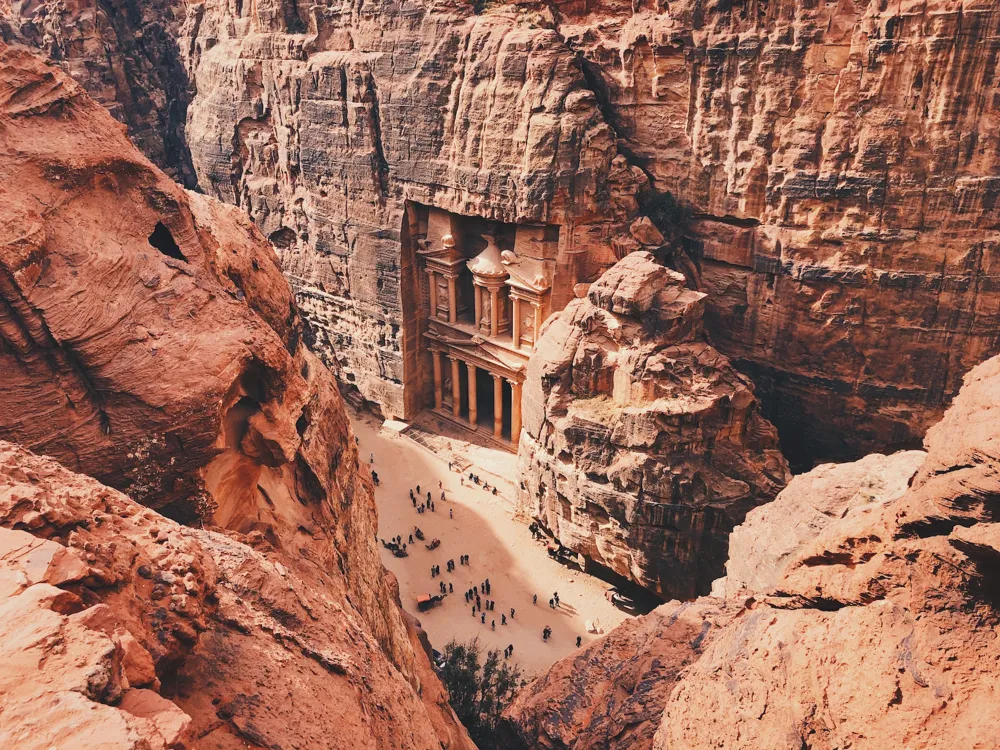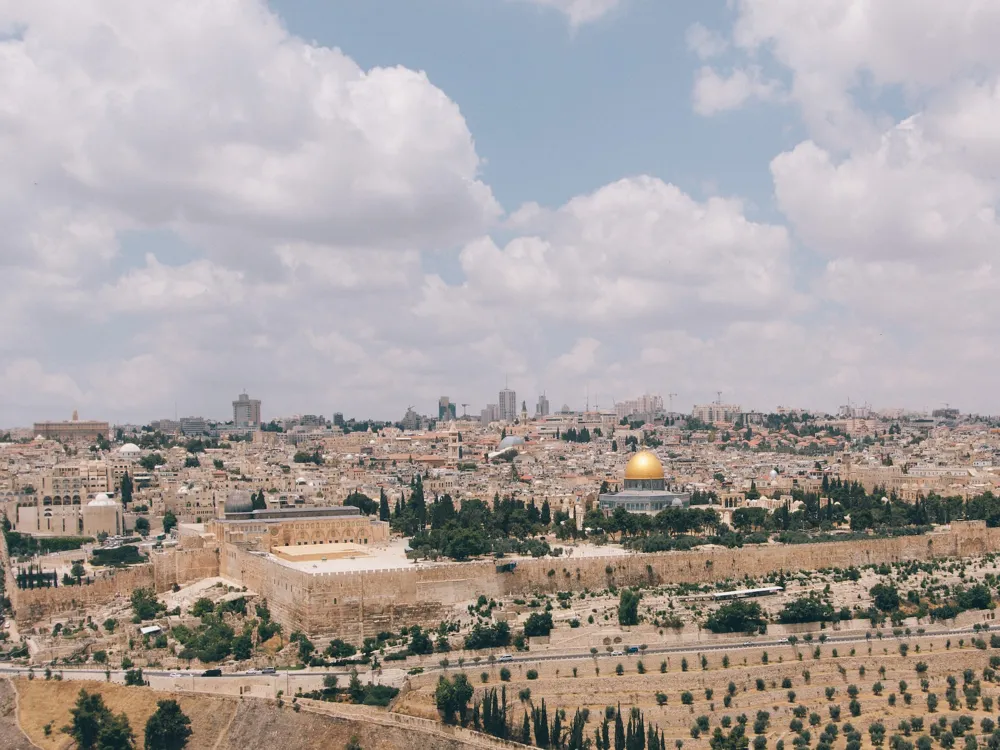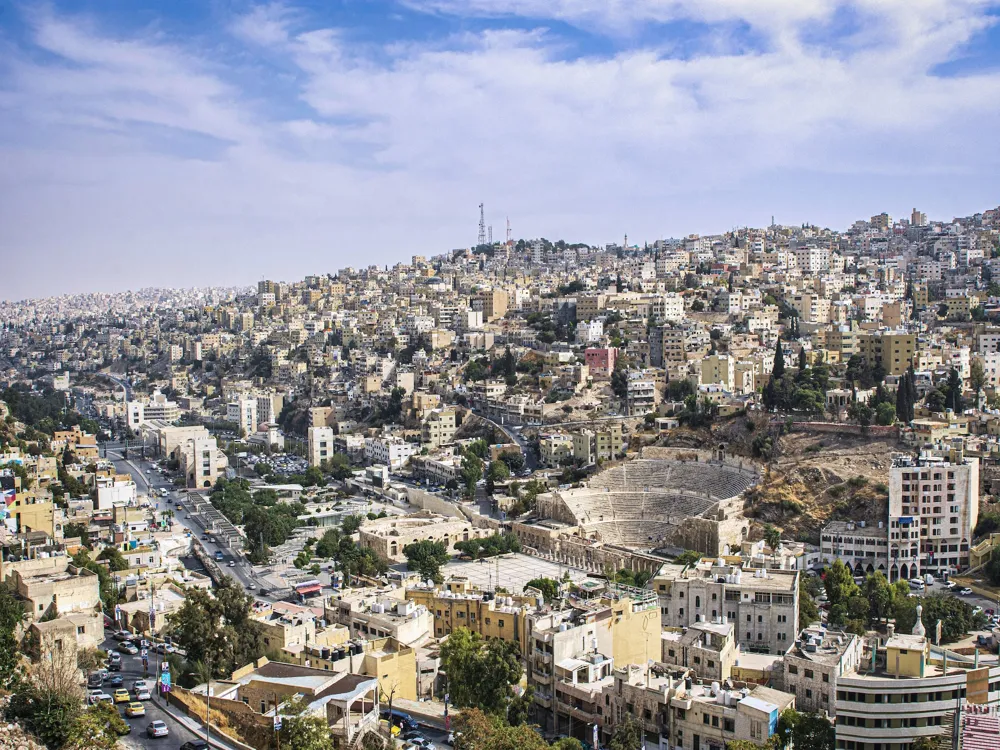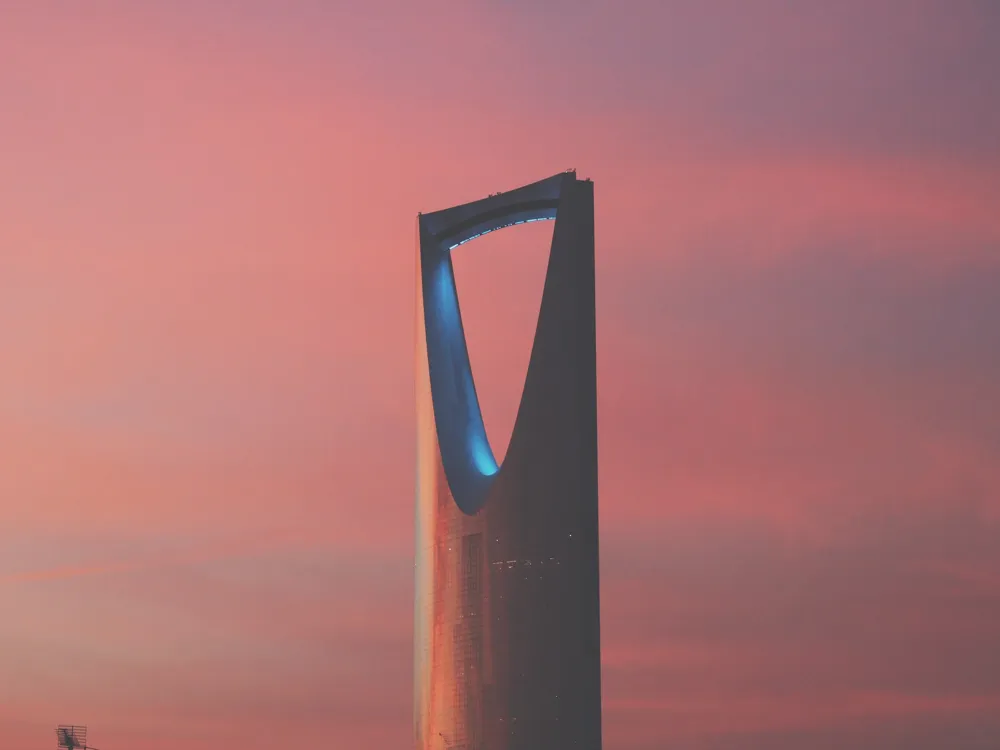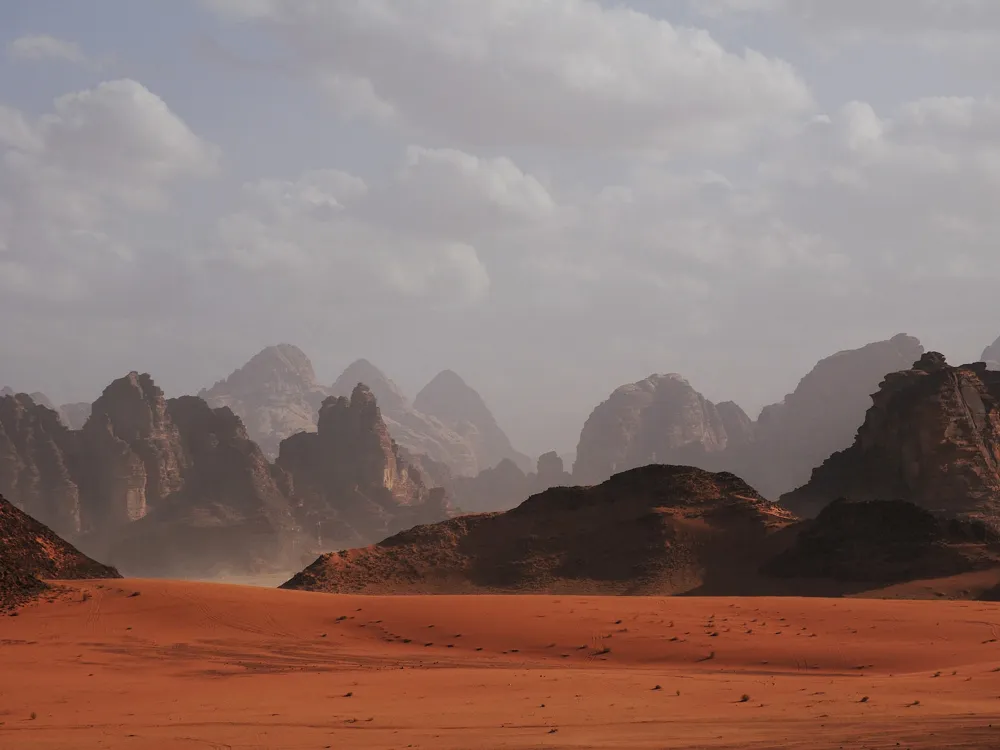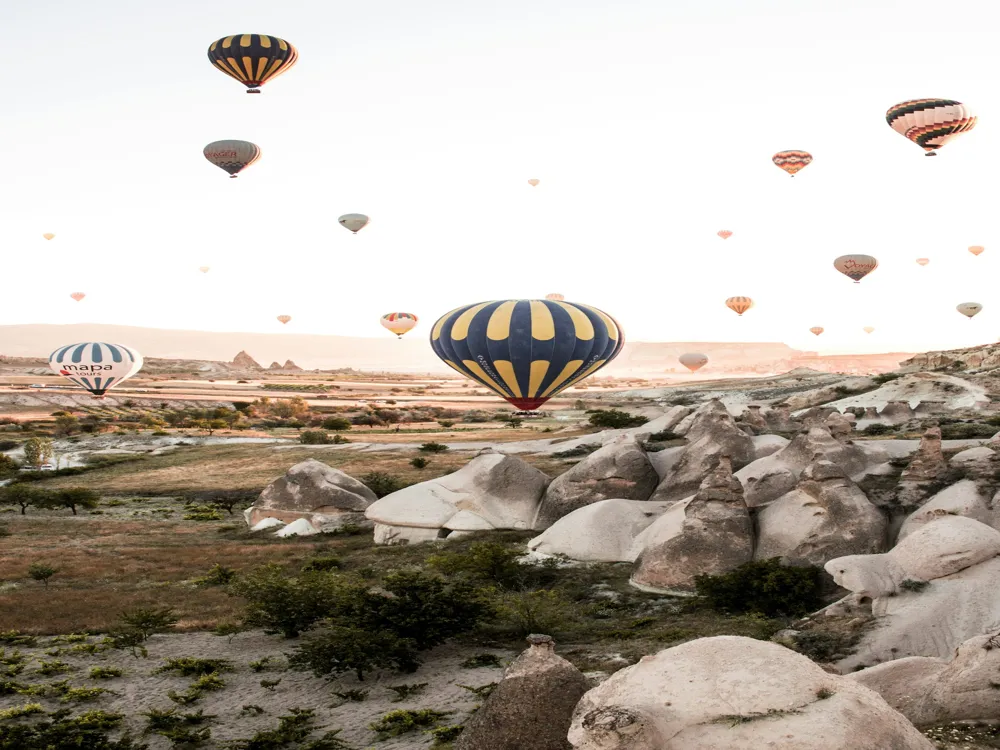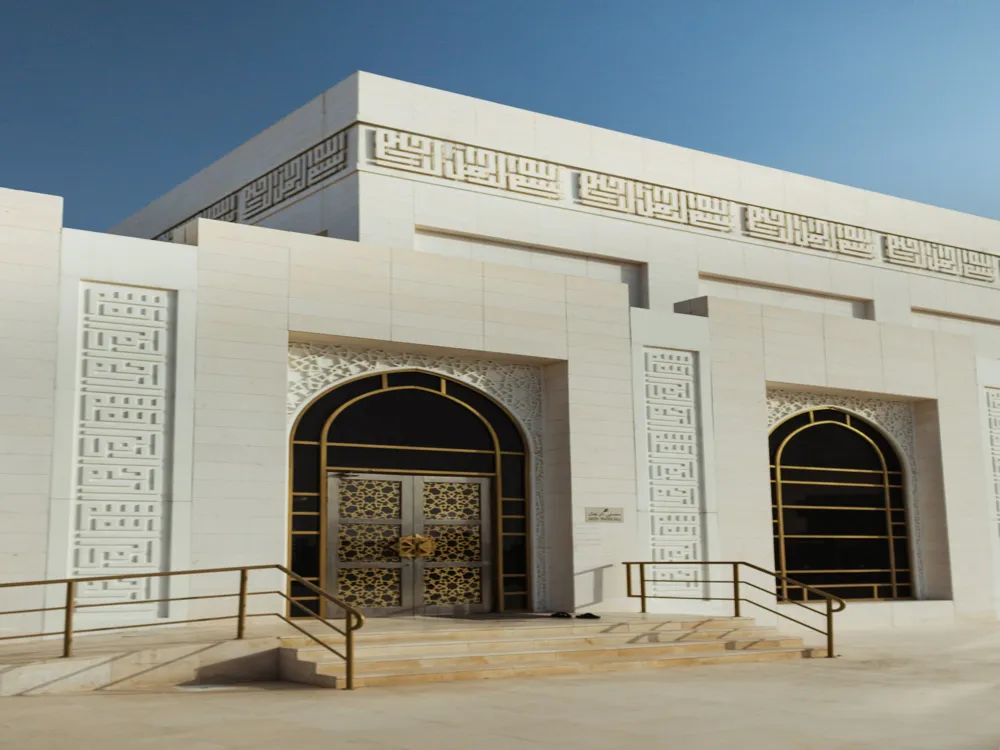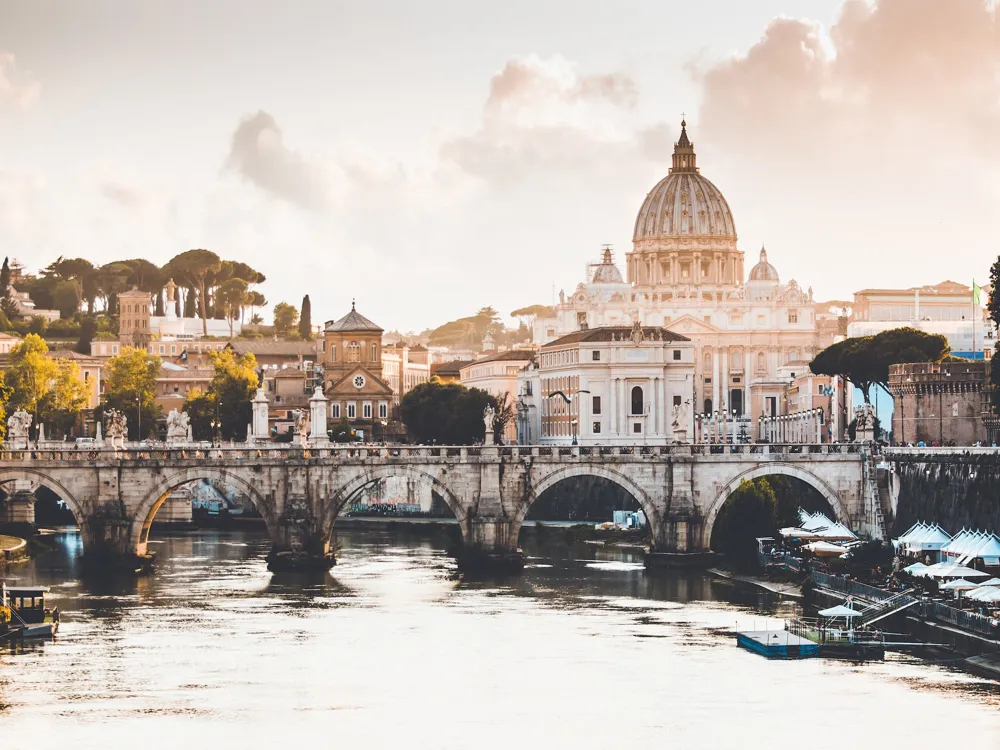Plan Your Travel To Petra
Places To Visit In Petra
Street of Facades
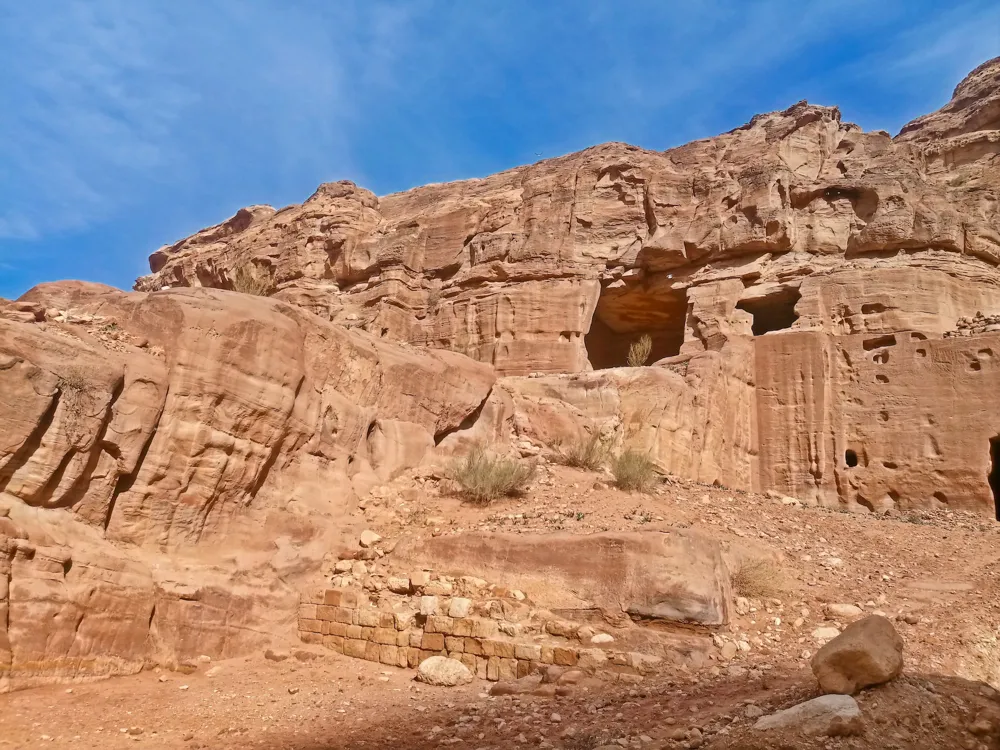
The Street of Facades is a row of monumental tombs. It is a long street lined with marvellous tombs with large facades, also known as false faces, hanging down their front. There are several burials on either side, decorated with grindstones. It is believed that some of these tombs were for senior city officials or even princes.
Some of the canyon walls are lined with tombs for ordinary citizens. Most of the facades are damaged up to great extent because of the floods.
Read More
The Dam
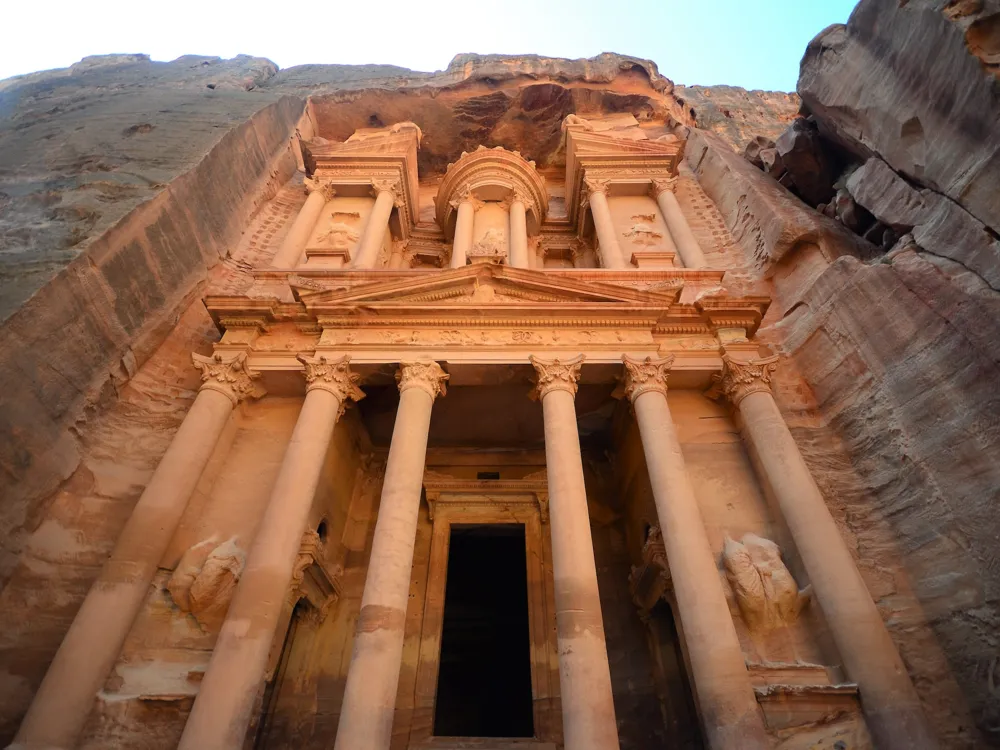
The dam stands at the entrance to the Siq. The Nabataeans constructed it to protect Petra from flash floods. They did so by redirecting flood waters into a tunnel which later came to be called the Dark Tunnel.
It was renovated by the government in 1963 and then again in 1991, staying true to the original architecture of the Nabataeans both times.
The Great Temple
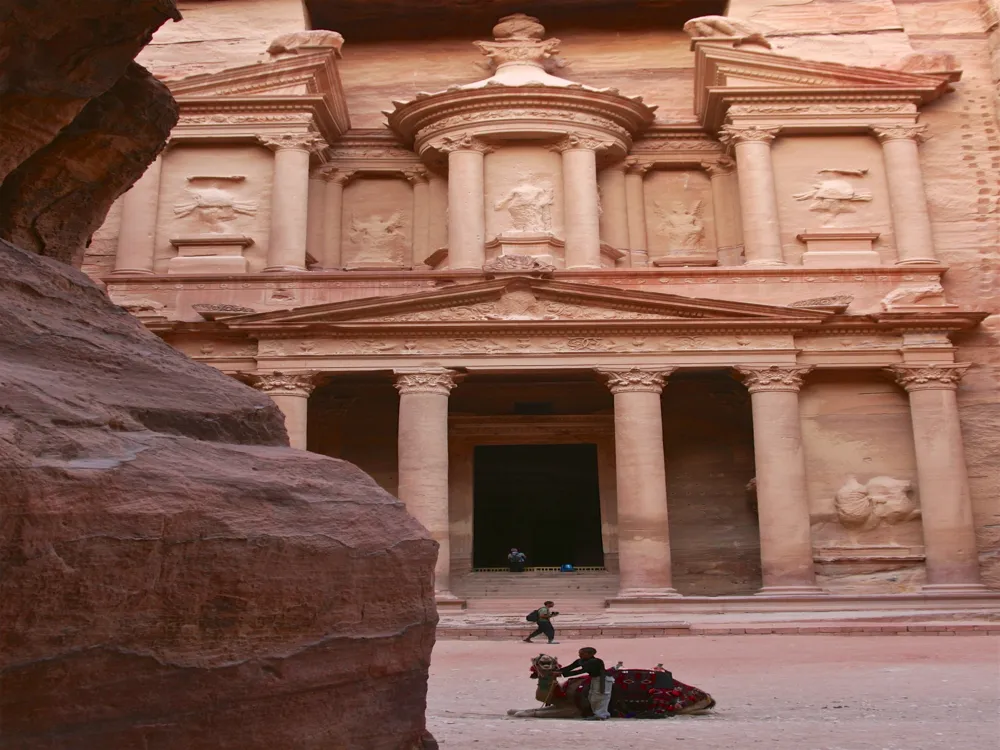
It is one of the biggest ruins in Petra. The Great Temple is the largest freestanding building discovered in Petra, covering an area of 7560 square m. Evidence found by archaeologists indicates that the temple was around 19 feet tall. The complex has two levels, a lower one and an upper one.
Although it is called the Great Temple, archaeologists do not know for certain if it in fact, a temple as recent findings indicate it might have been a palace and assembly hall.
Read More
The Siq
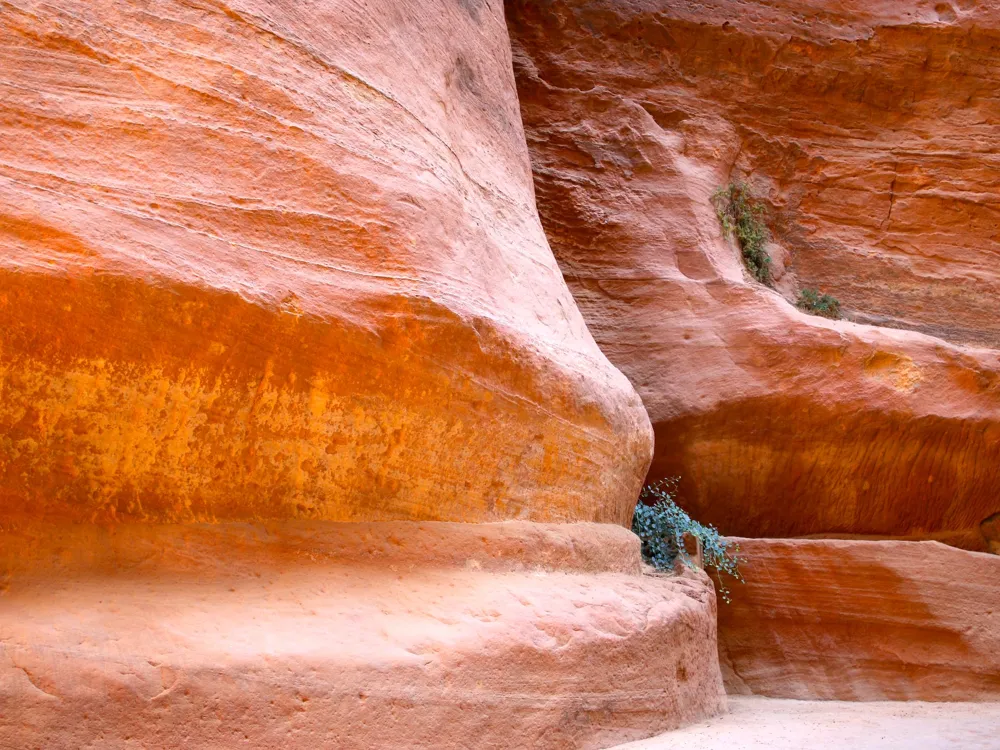
It is the ancient main entry to Petra and is a mile-long, narrow valley. The path starts at the dam and ends at the Treasury (Al Khazneh). The most impressive thing about the Siq is the limestone patterns which are carved all along the rocks.
Also known as the Siqit, it is the main enterance to the city of Petra. It is a narrow gorge and is about a mile long. There are channels on either side of the Siq to draw water from Wadi Musa. A valley outside leading to the Siq is known as Bab al Siq, where you can see massive square monuments carved out of the rock, known as Djinn rocks. YouÍll also see an Obelisk Tomb and even four pyramids.
Read More
The Treasury
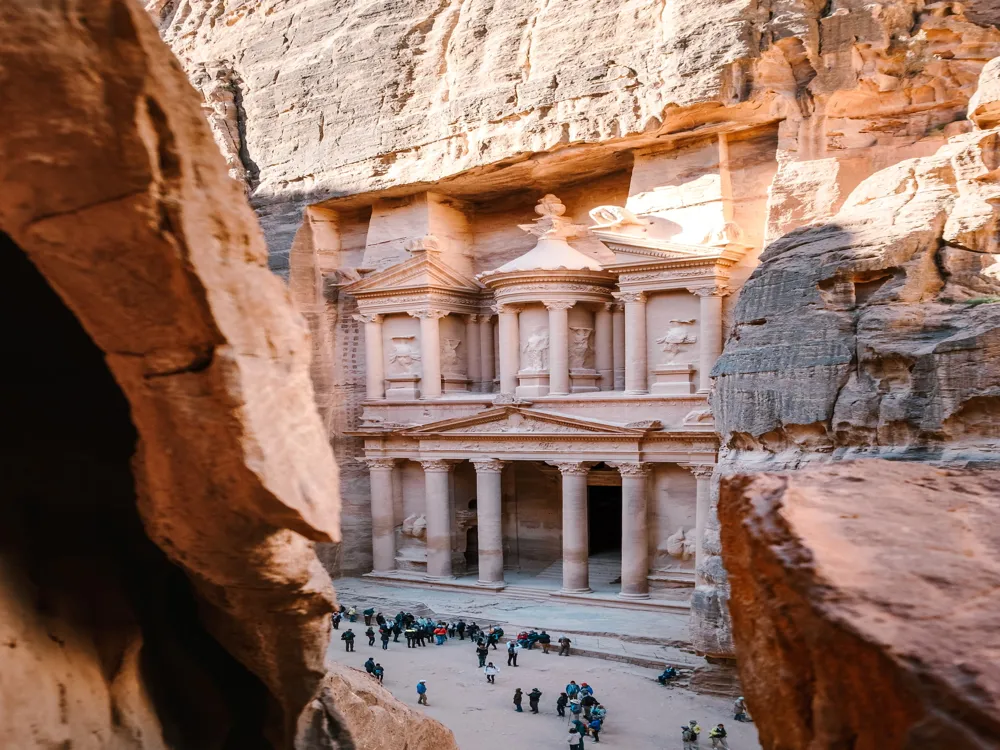
One of the most elaborate temples in Petra is Al-Khazneh, aka The Treasury. It is among the most renowned points of interest in both the region and Jordan. Al-Khazneh was constructed as a mausoleum and crypt of the Nabatean King Aretas IV Philopatris at the dawn of the 1st century.
The structure of Al-Khazneh was carved out of a sandstone rock face. Its facade features magnificent figurative and floral components that resemble the Ptolemaic Palace Architecture of Alexandria. Unfortunately, many architectural details of this erection have eroded over the twenty centuries since it was sculptured from the cliff. The carvings are said to be of various mythological figures related to the afterlife. Therefore people find it a fascinating sight. Notably, this building became famous as the Treasury (or Al-Khazneh) at the dawn of the 19th century as the Bedouins of that area believed that there were treasures hidden in the urn on the top. The visitors cannot explore the Treasury from inside though there is nothing to see, just an empty room inside the structure. On the way to Al-Khazneh, spot the magnificent rock formations, carvings on pink sandstone cliffs, obelisks, fascinating water conduit systems, collonaded streets, and more.
Read More
Little Petra
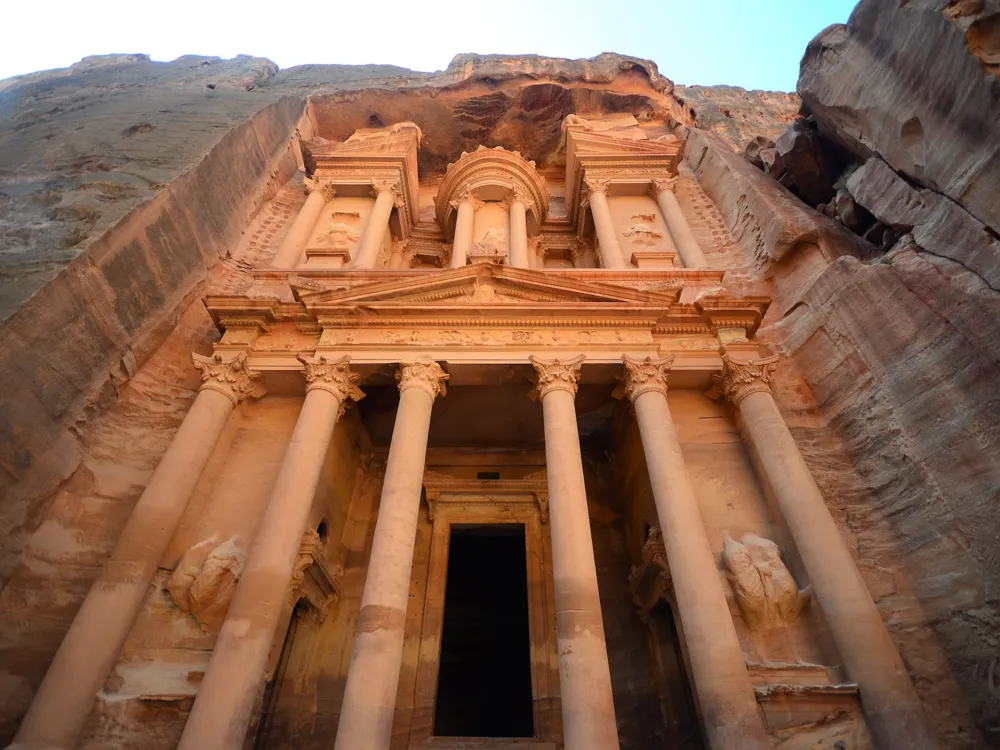
Little Petra, also known as Siq al-Barid, is an important Neolithic archaeological site located north of Petra in Wadi Musa. One of the first inhabited villages in the world, it is believed to be older than Petra and is also the original burial site for the Nabateans. The site is almost hidden away in a rocky area amidst mountains and is home to about 65 structures.
There are a few dining rooms with water basins and a small meeting hall (majlis) with benches or seats at this historical site. The site has niches carved into structures that perhaps held idols of Gods, a few water cisterns and caves, some of which have painted plaster ceilings. Several broken tablets dating back to the Neolithic age are littered across the site. There are stone steps all around Little Petra that provide access to its different attractions, including a flight of steps towards its backside that leads to a small boxed canyon. To enter, walk through a crack in the rocks and keep to the marked trails at all times.
Read More
The Monastery
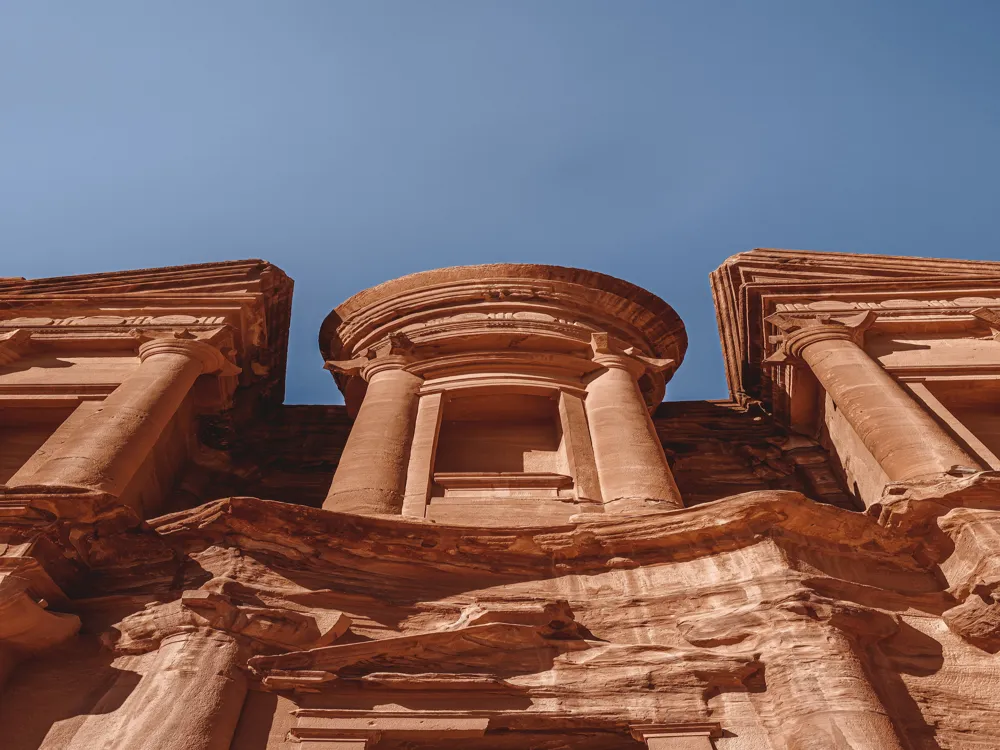
Ad Dier is one of Petra's most celebrated historical monuments and is also known as 'The monastery'. It is situated in the northwest part of the city. This monastery was sculptured from rosy-red sandstone around 2,000 years ago by the Nabateans. It is a marvellous example of classical Nabataean architecture.
The structure is a fusion of Hellenistic and Mesopotamian styles of architecture, which characterizes the zestful & diverse nature of Petra. Ad-Deir is the highest rock-cut façade in the Petra Archaeological Park, Jordan. It is even taller than the renowned Al Khazneh. The way to Ad Dier involves around an hour's trekking along the ancient rock-cut paths. There is a pathway with over 750 uneven steps enclosed by red rock cliffs and bright-pink oleander blooms. The rock-cut facade of Ad Dier is around 154 ft high and 157 ft broad. The structure features a broken pediment, whose two sides flank a central tholos-shaped component. This component has a cone-shaped roof crowned by an urn. The platform in the front was probably carved to accommodate folks for religious ceremonies. Besides, there is a single square chamber inside the monastery. Notably, Ad Dier is believed to be built in honour of Nabatean king Obodas I. On the top, there is a restaurant. It is a magnificent point for the visitors to enjoy the view & take photographs.
Read More
Colonnaded Street
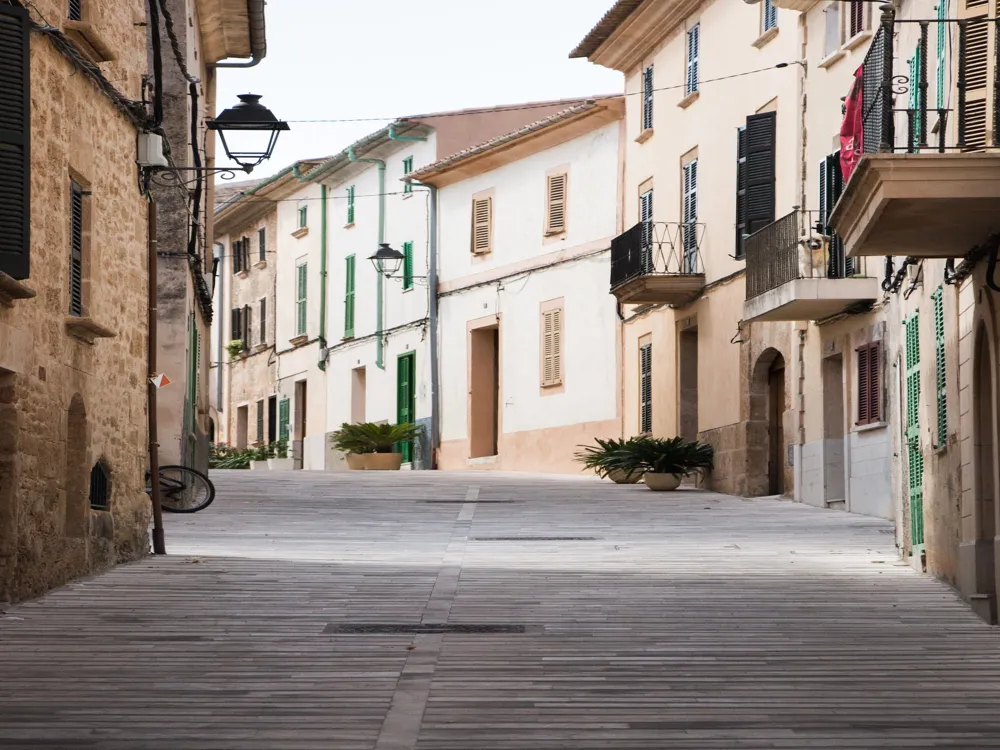
The ancient 6-meter-wide shopping streets of the lost city of Petra, refurbished during the Roman occupation in 106 BC, are an absolute walk into history and the first attraction you will see after passing through the entrance gate, the Siq. Although only a few columns and stumps remain, it is still an integral part of Petra as it leads to the Nymphaeum, the church and the marketplace, all the way to the Great Temple or Qasr-Al-Bint.
High Place of Sacrifice
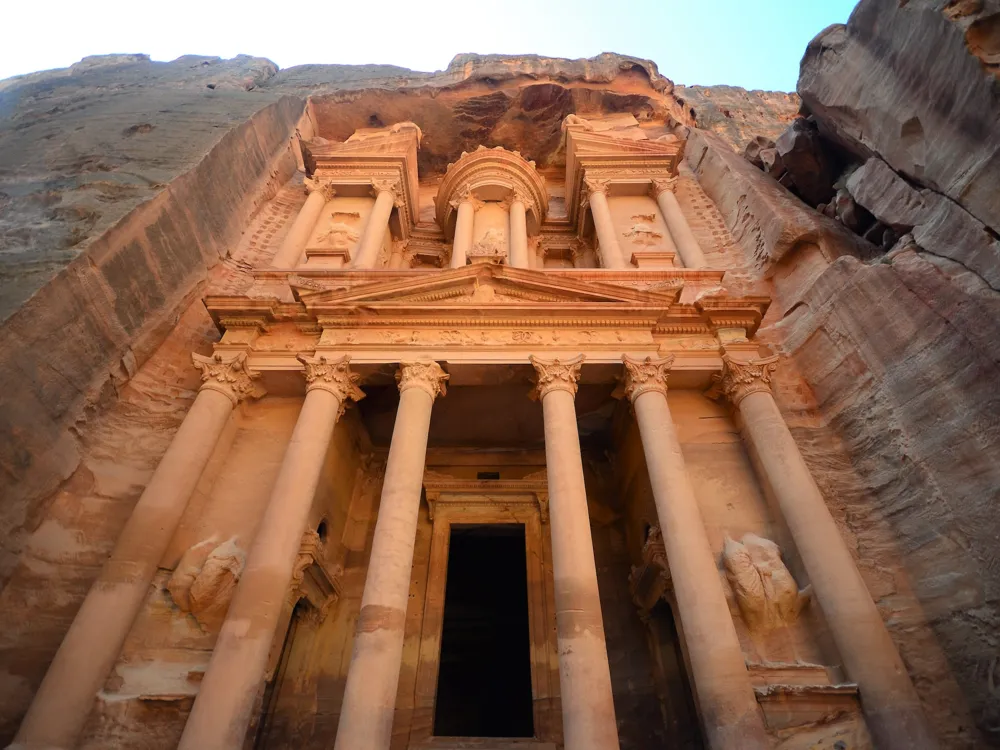
Also known as al-Madhbah, the High Place of Sacrifice is a historic site once used for animal sacrifices to the Nabatean God Dushara. One of the highest places in Petra, it is situated atop the Jebel Madhbah Mountain, close to the Petra Theater and the Street of Facades. It offers marvellous views of some of Petra’s renowned attractions and the camel handlers below. It is also an excellent place for photography.
This historic site features channels that were used to drain the blood and a rectangular triclinium where the communal supper was perhaps held. At the centre is a large stone block or motab, where the idols of deities were probably kept. There is also a circular altar with stone water basins nearby that were supposedly used for cleansing and purifying. The High Place of Sacrifice can be reached by climbing up a flight of steep stone steps that cross the nearby Obelisks, and on the way back, one can take the same path or choose the one along the western cliff. There are Bedouin stallholders around too.
Read More
Hiking in Petra
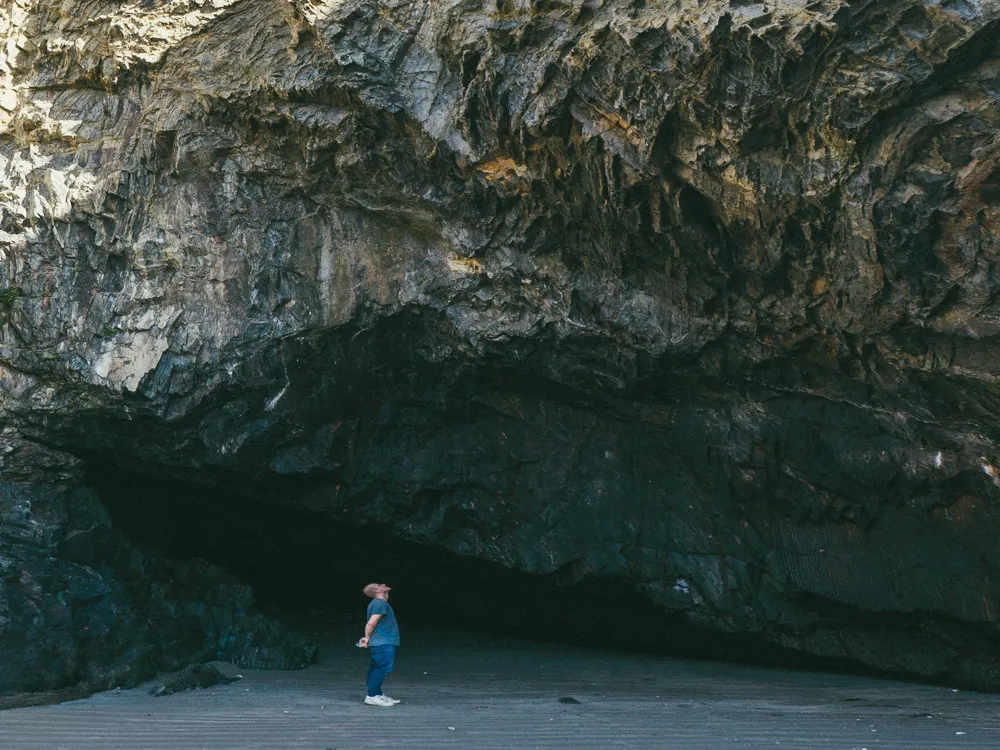
Petra is an Eden for hiking enthusiasts, as there are a number of hiking trails that can take up to 7 hours, depending on the walking pace. The easiest trails include the Main Trail and the Wadi Farasa Trail. The moderate trails are the Main Trail to Ad Dier (Monastery), the Al-Madras Trail and the Sabra Trail.
For lovers of strenuous hikes, there is the Al-Khubtha Trail (Treasury Viewpoint), the High Place Of Sacrifice Trail, the Return to Ad deir (Monastery) Trail, the Umm Al-Biyara Trail and the Jabal Haroun Trail. Another unofficial trail worth mentioning is a moderate hike that leads to the crusader castle of Vaux Moise.
Read More
Petra Travel Packages
View All Travel Packages Petra
Nearby Places Petra
Browse Package Collections
Browse Hotel Collections











